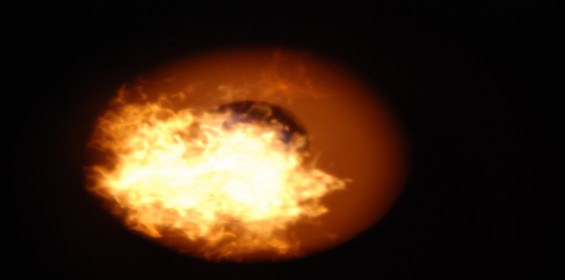Can effective combustion control reduce emissions by 10% each year?
Published: 21 April, 2020
Martin Thirsk, managing director of Energy Technology and Control, explains to Plant and Works Engineering how effective combustion control can reduce emissions by up to 10% each year, saving industrial burner operators thousands in energy costs.
The output of a boiler is reliant on the performance of its burner. A poorly designed boiler with an efficient burner may at times outperform a well-designed boiler reliant on a poor burner. Burners are designed to maximize combustion efficiency while minimizing the release of emissions. Specialist combustion controls are the most commonly used method of controlling emissions in all types and varieties of boilers.
Combustion controls can manage the following; low excess air (LEA), burners-out-of-service (BOOS), biased-burner firing (BF), flue gas recirculation (FGR), overfire air (OFA), and low-NOx burners (LNB).
The facts
Typically, combustion of 1m3 of Natural gas in an industrial boiler produces 2.03kg of C02, and 1 kWh of electricity generated in a gas fired power station produces 0.420kg of C02.
It is not unusual for an industrial burner/boiler to use in excess of 130,000 pounds of fuel per annum, directly emitting up to 15,700 tonnes of C02. If we add to that figure, the electricity used to power the burner fan, then the total C02 emissions caused by a single burner of this size can exceed 15,750 tonnes per annum.
From an environmental perspective it obviously makes sense to aim for a reduction in CO2 emissions, there is however also a business case for this as reduced CO2 is usually a result of improved efficiency and better fuel consumption.
The solution
Electronic controllers
By using electronic combustion controllers that are specifically customised to meet the needs of each individual burner manufacturer, it helps to ensure that the unique design features of each burner are fully realised. Integration of burner and boiler control into a small electronic controller also removes the need for large cabinets or housing; this not only lowers capital cost but also improves space utilisation.
When using an electronic controller, the low fire point can be set lower than the ignition point meaning that the turn-down ratio can be increased and burner on/off cycles and their associated cold air purges can be reduced. Savings of 5% have been reported on a burner that prior to conversion had an on/off frequency of approximately once every 10 minutes.
Emissions increase significantly during transient operation conditions compared to those at steady state operation conditions. Combustion control is one of the most effective approaches to reduce emissions, particularly during the transient operation. If a plant does not run continuously, then a second modulation control set-point can be utilised to switch the boiler to a lower steam pressure or hot water temperature during periods of reduced activity.
An illustrative example would be that of a manufacturer using hot water for paint drying; however due business requirements, the paint drying process needs to be held on stand-by at night. By using a second boiler set-point, energy savings of approximately 10% per annum can be realised.
Oxygen trim
When oxygen trim is an added on to the digital combustion controller, by the addition of a probe installed in the boiler flue exit. When oxygen trim is employed, flue gases are continually sampled to maintain optimum oxygen content, oxygen levels can then be trimmed to their optimum level.
This process automatically and continuously compensates for the variables that affect efficient combustion. An adaptive trim system will contribute energy savings of approximately 3% per annum.
Air dampers
By including an air damper - a valve or plate that stops or regulates the flow of air inside a duct, chimney, VAV box, air handler, or other air-handling equipment – it is possible to cut off central heating to an unused room, or to regulate it for room-by-room temperature and climate control.
By installing automatic combustion air dampers, which only open when the burners are operating, exposure of the boiler and piping to cold outside air is reduced.
Unfortunately air dampers can leak and even when fully closed the air flow can be significant. However combustion efficiency can be improved at low fire if the fan speed is reduced. By simply adding fan speed control, burner turn-down can be increased further without compromising low fire efficiency, and additional fuel savings can quickly be achieved.
Inverter
An inverter converts low frequency main AC power to higher frequency for use in heating; the introduction of an inverter can avoid extra clamping diodes or voltage balancing capacitors.
When an inverter is used to slow the speed of an ac electric motor, electrical energy savings result. For example, when a fan motor is slowed to half speed an 80% electrical energy saving is achieved and emissions at the power generation plant reduced.
Electronic control facilitates direct driving of the fuel valves and air dampers resulting in no
wear/backlash and on frequently modulating burners additional energy savings of up to 1% are common.
Benefits
More efficient combustion in industrial burners conserves fuel, lowers emissions, reduces plant operating costs and prolongs the life of the boiler plant. The efficiency afforded by conserving fuel and reducing operating overheads is in itself a business case for reviewing combustion control; this is compounded when looked at in conjunction with the longer boiler life and lower emissions.
The benefits for the burner manufacturer include, full integration, better control, improved flexibility, increased performance, improved reliability, lower cost, simplified wiring and a reduction in storage space required.







